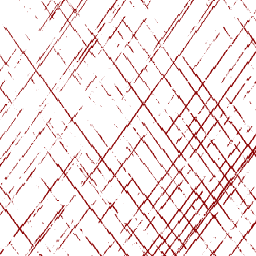
- 数据集可用性
- 2019-04-17T00:00:00Z–2023-03-16T00:00:00Z
- 数据集提供商
- 栅格化:Google 和美国森林服务局生态遥感应用实验室 (LARSE) 网格化 GEDI 植被结构指标和生物质密度
- 标签
说明
此数据集包含近乎全球范围的分析就绪型多分辨率网格化植被结构指标,这些指标源自 NASA 全球生态系统动态调查 (GEDI) 2 级和 4A 级产品,与直径为 25 米的激光雷达覆盖范围相关联。此数据集全面展示了近乎全球的植被结构,其中包含整个垂直剖面,完全基于 GEDI 激光雷达数据,并已通过独立数据进行验证。
GEDI 传感器安装在国际空间站 (ISS) 上,使用 8 道激光束(沿轨道方向间隔 60 米,横向间隔 600 米)来测量地球表面上大约北纬 52 度到南纬 52 度之间的地面海拔高度和植被结构。在 2019 年 4 月 17 日至 2023 年 3 月 16 日期间,GEDI 分别获取了 110 亿和 77 亿个适合测量地面海拔和植被结构的优质波形。
除了许多标准的 L2 和 L4A 拍摄指标之外,我们还推导出了几个额外的指标,这些指标可能对地球系统模型中碳和水循环过程的应用,以及森林管理、生物多样性建模和栖息地评估特别有用。变量包括冠层高度、冠层覆盖率、植物面积指数、叶片高度多样性和 5 米分层的植物面积体积密度。如需了解详情,请参阅网格化 GEDI 植被结构指标和生物质密度。
每个 GEDI 拍摄指标都包含 8 个统计信息:平均值、平均值的自举标准误差、中位数、标准差、四分位距、第 95 百分位数、Shannon 多样性指数和拍摄次数。所用优质拍摄过滤方法与 GEDI L4B 网格化地上生物量密度(版本 2.1)相符。与相应的 GEDI L3 数据集相比,此数据集在多个空间分辨率和多个时间段(每年和整个任务持续时间)内提供了额外的网格化指标。
此数据集以光栅网格形式提供 GEDI 拍摄指标,并汇总为三种空间分辨率:1 公里、6 公里和 12 公里。此数据集使用 1 公里的像素大小。
频段
像素尺寸
1,000 米
频段
| 名称 | 像素尺寸 | 说明 |
|---|---|---|
mean |
米 | 像素内 GEDI 拍摄指标值的平均值 |
meanbse |
米 | 使用自举重采样计算的平均值的标准误差。 创建了 100 个自举样本;每个样本都包含随机选择的 70% 的镜头。标准误差是使用自举样本的平均值计算的。(仅当网格单元中至少有 10 个 GEDI 拍摄点时才计算。) |
median |
米 | 像素内 GEDI 拍摄指标值的中位数值(第 50 百分位)。 |
sd |
米 | 像素内 GEDI 拍摄指标值的标准差。 |
iqr |
米 | 像素内 GEDI 拍摄指标值的四分位距(第 75 百分位数减去第 25 百分位数)。 |
p95 |
米 | 像素内 GEDI 拍摄指标值的第 95 百分位数值。 |
shan |
米 | 像素内 GEDI 射击指标值的香农多样性指数 (H)。 计算方式为:-1(sum(plog(p))),其中 p 是每个箱中 GEDI 拍摄值的比例。 |
countf |
米 | 相应像素内 GEDI 拍摄指标值的数量。我们使用 30 米子网格来选择在每个 30 米子网格单元中获取的(时间上)第一个 GEDI 拍摄。 |
使用条款
使用条款
此数据集位于公共领域,可随意使用和分发。如需了解更多信息,请参阅 NASA 的地球科学数据和信息政策。
引用
Burns, P.、Hakkenberg, C.R. & Goetz, S.J. Multi-resolution gridded maps of vegetation structure from GEDI. Sci Data 11, 881 (2024). doi:10.1038/s41597-024-03668-4
使用 Earth Engine 探索
代码编辑器 (JavaScript)
var palettes = require('users/gena/packages:palettes'); // GEDI image collections at different spatial resolutions var ic_1k = ee.ImageCollection('LARSE/GEDI/GRIDDEDVEG_002/V1/1KM') var ic_6k = ee.ImageCollection('LARSE/GEDI/GRIDDEDVEG_002/V1/6KM') var ic_12k = ee.ImageCollection('LARSE/GEDI/GRIDDEDVEG_002/V1/12KM') // slopeshade basemap var elev = ee.Image('MERIT/DEM/v1_0_3').select('dem') var slope = ee.Terrain.slope(elev) Map.setCenter(92.319, 27.129, 8) Map.addLayer( slope, {min: 0, max: 40, palette: ['ffffff', '000000']}, 'Slopeshade') var opac = 0.7 // View various measurement count metrics from 2019 to 2023 // "va" in the asset name corresponds to the count of high-quality, leaf-on // vegetation measurements by GEDI var i_counts_1k_19to23 = ee.Image( 'LARSE/GEDI/GRIDDEDVEG_002/COUNTS/V1/1KM/gediv002_counts_va_20190417_20230316') // Number of GEDI laser shots (i.e. footprints) per 1km pixel Map.addLayer( i_counts_1k_19to23.select('shots_count'), {min: 0, max: 200, palette: palettes.matplotlib.magma[7]}, 'Shot count per 1km pixel, 2019 to 2023', 0, opac) // Number of ISS orbits (with valid GEDI shots) per 1km pixel Map.addLayer( i_counts_1k_19to23.select('orbits_uniq'), {min: 0, max: 10, palette: palettes.matplotlib.plasma[7]}, 'Unique orbits per 1km pixel, 2019 to 2023', 0, opac) // The Nearest Neighbor Index (Evans et al. 2023), a proxy for quantifying // spatial clustering/dispersion of GEDI shots Map.addLayer( i_counts_1k_19to23.select('shots_nni'), {min: 0.5, max: 1.5, palette: palettes.colorbrewer.RdBu[7]}, 'Shot nearest neighbor index per 1km pixel, 2019 to 2023', 0, opac) // View several GEDI vegetation structure metrics at 1km spatial res. // For GEDI metric descriptions see Table 1 at // https://daac.ornl.gov/GEDI/guides/GEDI_HighQuality_Shots_Rasters.html // Relative height of the 98th percentile of returned energy (RH98), a proxy for // tree canopy height var i_rh98_1k_19to23 = ee.Image( 'LARSE/GEDI/GRIDDEDVEG_002/V1/1KM/gediv002_rh-98-a0_vf_20190417_20230316') // display the median value of GEDI RH98 measurements per 1km pixel, masking out // values less than 3 consider using a threshold of 10 shots per 1km pixel. More // shots generally yield more accurate estimates of the aggregation statistics // (different bands) var i_rh98_1k_19to23_med = i_rh98_1k_19to23.select('median') var rh98_pal = palettes.crameri.bamako[10].reverse() Map.addLayer( i_rh98_1k_19to23_med.updateMask(i_rh98_1k_19to23_med.gte(3).and( i_rh98_1k_19to23.select('countf').gte(10))), {min: 3, max: 40, palette: rh98_pal}, 'Median RH98 per 1km pixel, 2019 to 2023', 1, opac) // Standard deviation of RH98 per 1km pixel. Captures variability of GEDI // measurements and vegetation heterogeneity Map.addLayer( i_rh98_1k_19to23.select('sd').updateMask(i_rh98_1k_19to23_med.gte(3).and( i_rh98_1k_19to23.select('countf').gte(10))), {min: 2, max: 20, palette: palettes.cmocean.Curl[7]}, 'SD of RH98 per 1km pixel, 2019 to 2023', 0, opac) // Foliage height diversity of the 1m vertical Plant Area Index (PAI) profile var i_fhd_1k_19to23 = ee.Image( 'LARSE/GEDI/GRIDDEDVEG_002/V1/1KM/gediv002_fhd-pai-1m-a0_vf_20190417_20230316') Map.addLayer( i_fhd_1k_19to23.select('median').updateMask(i_rh98_1k_19to23_med.gte(3).and( i_rh98_1k_19to23.select('countf').gte(10))), {min: 1.2, max: 3.2, palette: palettes.matplotlib.viridis[7].reverse()}, 'Median FHD per 1km pixel, 2019 to 2023', 0, opac) // The height above ground associated with the peak of the vertical Plant Area // Volume Density (PAVD) profile var i_pavdmaxh_19to23 = ee.Image( 'LARSE/GEDI/GRIDDEDVEG_002/V1/1KM/gediv002_pavd-max-h_vf_20190417_20230316') Map.addLayer( i_pavdmaxh_19to23.select('mean').updateMask(i_rh98_1k_19to23_med.gte(3).and( i_pavdmaxh_19to23.select('countf').gte(10))), {min: 0, max: 25, palette: palettes.cmocean.Haline[7].reverse()}, 'Mean Height of Max. PAVD, 2019 to 2023', 0, opac) // 1km coverage is not great in the low latitudes, try 6 or 12km for a more // continuous depiction var i_rh98_6k_19to23 = ee.Image( 'LARSE/GEDI/GRIDDEDVEG_002/V1/6KM/gediv002_rh-98-a0_vf_20190417_20230316') // display the median value of GEDI RH98 measurements per 6km pixel, masking out // values less than 3 consider using a threshold of 100 shots per 6km pixel. // More shots generally yield more accurate estimates of the aggregation // statistics (different bands) var i_rh98_6k_19to23_med = i_rh98_6k_19to23.select('median') Map.addLayer( i_rh98_6k_19to23_med.updateMask(i_rh98_6k_19to23_med.gte(3).and( i_rh98_6k_19to23.select('countf').gte(100))), {min: 3, max: 40, palette: rh98_pal}, 'Median RH98 per 6km pixel, 2019 to 2023', 0, opac)
